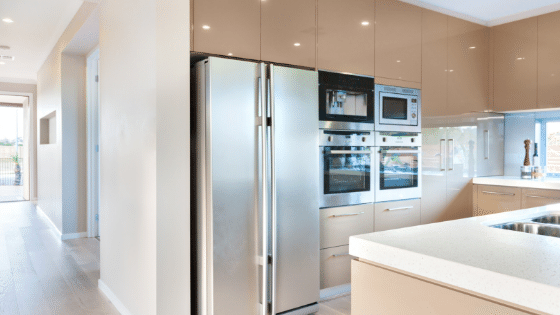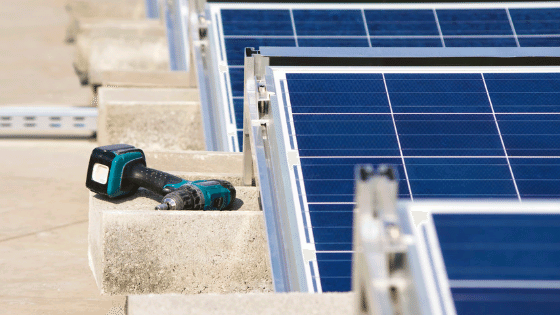How to Pay for your Solar Panels and Start Saving Money for Good

Go Green and Save Green? How Much can Solar Energy Save You?
May 14, 2019
How Do Solar Panels Produce Electricity
June 16, 2019Shine Me the Money!
If by now, you’ve decided that installing solar panels on your home is right for you, the next big question you might have is, “how do I pay for it?”
Solar energy can reduce the amount of your monthly electric bill and save you money long term. There is no doubt that solar panels offer tremendous financial benefits. Nevertheless, paying installation costs for your solar panel system can be a significant concern.
The good news is that the cost of solar energy has significantly decreased over the last decade. With falling prices, solar energy is more affordable than ever before. It is more accessible to home and business owners who want to reduce their energy bills and do something good for the environment. In this guide, we’ll go over several ways that you can pay for your solar panels, including loans, leasing programs, and less conventional forms of funding.
Solar Loans
Solar loans work like any other types of loans. A lender loans you the money to pay for your project, and you pay for it over time. Some lenders offer no money down options so that you don’t have to come up with any money up front.
Loans are tailored for several financial situations, including people with less than perfect credit and those who want to pay off their loans fast. As with any loan, your credit score, interest rate, and all other loan fees will determine how much you end up paying.
While some solar companies offer their own financing, others have a network of lenders and programs that they recommend to their customers. In either case, a reputable solar company will have first-hand knowledge of the different types of loans that are available.
Loans Based on Solar Tax Credits
Going solar means you can take advantage of investment tax credits. In California, the state tax credit is 30% for the cost of installing your solar panels. These combination loans are designed in two parts:
Borrowers pay off 30% of their loans instantly with the tax credit
Borrowers pay the remaining 70% at a reduced rate
These loans give you the benefits of a large down payment and cutting the cost and length of your loan. Keep in mind that the 30% deduction is valid until 2019. It is expected to be reduced to 26% by 2020.
PACE Program
Most states, including California, offer PACE Loans, which stands for Property Assessed Clean Energy. PACE is available for both residential and commercial properties.
This program is designed so that property owners can finance 100% of the cost of an energy-efficiency improvement and pay it over time through their property taxes. The cost of the project is added to their annual tax bill.
The unique feature about this program is that this amount is assessed to the property, not the owner. Therefore, if you sell your home, the next owner continues to pay for the solar panels through the property’s taxes.
Home Equity Line of Credit (HELOC)
A homeowner can use the equity in their home to pay for home improvements. As collateral, the lender places a lien on the property.
The lender determines the amount of your credit line based on how much equity you have in your home. To give an example:
Your home’s current value = $530,000
The amount you currently owe on your mortgage = $200,00
$530,000 – $200,000 = Your Home’s Equity $330,000
Home equity loans are right for homeowners who don’t have enough up-front cash to pay for large home improvement projects. It allows these owners to use the equity in their homes as a source of funding. Also, homeowners can only withdraw the amount of cash they need, and interest payments on these loans are tax deductible.
The main drawbacks to these loans are:
They are tied to your home’s market value which can fluctuate and decrease.
Rates are variable making it difficult to keep up with payments.
They reduce the equity of your home.
Solar Leasing Programs
A solar leasing program works like any other type of lease. You pay a third-party a flat monthly rate.
With leasing programs, you don’t own your solar panels and you are ineligible for any tax credits. Your provider is the company that can claim the tax credits. It’s no different from paying a landlord monthly rent. As a tenant, you cannot claim any home improvement tax credits for a property you don’t own.
Regardless, leasing is still a great option for people who want to cut their energy costs and have a predictable monthly payment for their solar panels. It’s also a good option for people who plan to sell their homes in the near future.
Another great advantage of leasing programs is that the third-party provider is responsible for all installation and maintenance costs. The only thing you have to worry about is making your monthly payment.
Power Purchase Agreements (PPAs)
Power Purchase Agreements (PPAs) are not much different from leasing in that you don’t own the panels, and you pay a third-party a monthly rate. This company is also responsible for installation and maintenance.
The main difference between the two programs is that with PPA’s, you only pay for the amount of power you actually use each month. Whereas, with a traditional leasing program, you pay the same fee, regardless of how much electricity you use.
It works similar to paying your local utility company every month. Your payments will vary monthly based on how much energy you consume. It’s a good option for homes that are naturally efficient in other ways, such as homeowners who don’t spend much time at home or use a few appliances that are energy-efficient.
Paying Cash Up-Front for your Solar Panels
If you can afford to pay for your panels with cash, it will give you the highest return on your investment. You’ll never have to worry about paying interest or any other fees. You’ll own your solar panels, and you get to enjoy both the tax credits and energy savings costs.
Cash purchases allow you to deal directly with the solar contractor. Usually, a solar installer will ask for a portion of the payment to begin the work and will bill the final amount once your panels are installed.
Alternative Funding Methods for Solar
There are some creative ways of paying for solar, including crowdfunding. It’s important to note that crowdfunding sources are usually geared toward commercial solar projects in the non-profit sector. However, homeowners have other available alternative sources for funding their projects.
One of those methods is through group purchases. This type of program works where a group of residents applies and receive a collective discount. For example, you, along with your neighbors and other residents on your block, would receive a discounted rate for multiple solar projects.
Another method to collectively fund your solar project is through shared solar. This method still involves a third-party, such as a lender; however, everyone contributes a portion toward a larger project.
Alternative forms of funding for solar are less common, but they are out there if you look hard enough. Loans and leasing programs still remain the most popular ways to pay for home improvement projects.
The good news is that solar energy is cheaper than ever, and there is no denying the financial rewards that come with switching to this cleaner and abundant form of renewable energy.
Markey Electric and Solar does not provide direct solar financing. However, we can help you search for funding solutions to get your solar project started.
Have any questions or want to receive a free solar panel quote?
Send Us a Message






